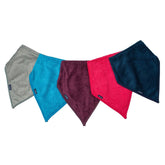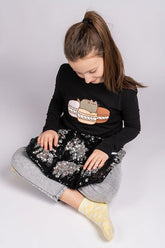Trending Now
Popular Products
Classic Kerchief in Bamboo Towelling
- £11.99
- £11.99
- (-0%)
- Unit price
- / per
-
Teal
-
Burgundy
-
Grey
-
Navy
- Berry
Kes-Vir Men's Swim Wrap Shorts
- £76.99
- £76.99
- (-0%)
- Unit price
- / per
Two Tone Sequin Weighted Lap Pillow
- from £35.99 (£43.19 inc VAT)
- from £35.99 (£43.19 inc VAT)
- (-0%)
- Unit price
- / per
-
Navy
-
Black
-
Pink
Need Help?
Email Us
Additional Needs Mealtimes: Practical Advice
Many children and young people find eating and drinking tricky due to reduced grip, restricted movement, low muscle tone, motor planning difficulties, or sensory differences. With the right setup and tools — and a bit of practice — mealtimes can be calmer, safer and more independent.
Safety note: If there are known or suspected swallowing (dysphagia) issues, follow your Speech and Language Therapist’s guidance. Products mentioned here are not medical devices unless expressly stated on their product page.
Who this can help
- Children and young people with reduced grip/hand strength, low tone or tremor
- Those with motor planning/coordination difficulties or fatigue
- Autistic people and anyone with sensory processing differences around taste, texture, temperature, smell or sound
- Parents, carers, schools and professionals supporting mealtimes at home or in education
Quick wins
- One change at a time: swap a cup or add a non-slip mat; allow time to practise.
- Stable seating: feet supported; hips, knees and ankles roughly at 90°; table at a comfortable height.
- Reduce sliding: use non-slip mats under plates/bowls.
- Predictable routine: same chair/place, simple visual prompts, consistent order of steps.
- Keep it hygienic: choose wipe-clean or washable items and follow care guidance.
Positioning & setup
- Ensure the chair provides trunk support; add a footrest if feet dangle.
- Bring food and utensils close to the body midline to reduce overreaching.
- Use shallow bowls/plates that help food “collect” to reduce chasing food around the plate.
- Keep distractions down; lower noise, bright lights and strong smells if these increase stress.
Sensory strategies
- Texture/temperature: start with accepted textures; introduce small changes (e.g. slightly thicker/thinner) gradually.
- Smell/taste: keep strong-smelling foods covered until serving; offer “safe” foods alongside new ones.
- Predictability: use simple visual schedules or first/then boards to reduce anxiety and support sequencing.
- Pacing: short, regular meals; use a visual timer to support start–finish and reduce rushing.
Products that can help
Start with these ranges, then pick items that fit age, setting and budget. Collections first; examples are optional.
- Mealtime Aids – plates/bowls that aid scooping; adaptive cutlery
-
Drinking Aids – handled cups, controlled-flow and cut-out (nosey) cups
- Examples: ARK Flexi Cup (Pack of 2), Handycup with Lid
- Non-slip & stabilising – keep plates steady and reduce spills
- Gripping aids & universal straps – support holding cutlery, cups or brushes
- Bibs & aprons – wipe-clean and washable protection for children and adults
- Visual supports & simple tech – first/then cards, schedules, and timers to aid routine and pacing
Tips for success
- Model movements: “scoop → lift → bite → put down.” Keep language short and consistent.
- Start with small portions; offer top-ups to reduce overwhelm.
- Build stamina gradually; end before fatigue to keep confidence high.
- Clean and dry equipment after each use; check for wear (especially spouts/valves).
- Involve the child where possible (choosing plate/cup, setting the mat) to increase buy-in.
Troubleshooting
- Refusing new textures: pair a tiny taste with a safe food; celebrate small wins.
- Spilling or tipping: try a sloped plate/scoop dish and a non-slip mat; reduce bowl depth.
- Rushing: use a visual timer and prompt pauses between mouthfuls.
- Weak grip: add a universal strap or thicker-handled cutlery.
- Frequent coughing/choking: stop, seek advice from your SLT/clinician.
Funding & budgets
- Potential funding options for families
- Digital catalogues to compare options by category
Need advice?
Email enquiries@fledglings.org.uk with goals, age and setting (home/school). We’ll suggest options that fit your budget. We accept Purchase Orders. UK delivery from £4.99.
Support our work
Donate to Fledglings to help us keep advice free and prices fair.
Related
Last reviewed: 11 September 2025
- Choosing a selection results in a full page refresh.







